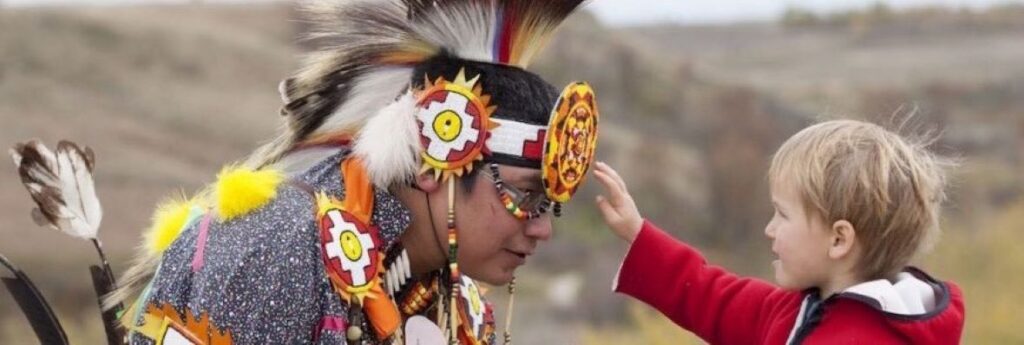A group representing thousands of Indigenous-led tourism operators says the recent federal budget will not do enough to help the industry avoid collapse. The Indigenous Tourism Association of Canada (ITAC) asked the government for just over $68 million over three years to help the sector, but instead received about $2.4 million for this year.
Those funds won’t provide the targeted help necessary, says ITAC’s president and CEO John Henry, and that the association, which represents a “systematically disadvantaged sector,” is close to insolvency and the industry is at risk of collapse.
“There’s a discrepancy with the government saying that they are investing into Indigenous tourism versus funding solutions that we and the industry actually have access to,” says Henry. “Separate from ITAC’s operational budget, we need to see another line item in the federal budget that recognizes Indigenous tourism as a separate sector within the overall tourism industry, where dedicated financial support for recovery is allocated to the industry and business owners and managed through an Indigenous-led solution.
“This is the most effective way to provide direct support to Indigenous tourism operators who are barely hanging on as they wait for tourism’s recovery,” he added.
Through its “Strategic Recovery Plan,” ITAC had asked for a multi-year commitment of $50 million plus $18.3 million in emergency relief, but Henry says the organization was “shocked” to find that despite “positive conversations” with Indigenous Services Canada, the agency only recommended that $2.4 million be allocated to ITAC – a 20% reduction in core funding year-over-year – and only committed to one year of support.
ITAC says without directed funding of $68.3 million and the reduction in the operating budget, it will be incapable of meeting its contractual obligations to directly support its members, provincial and territorial partners as well as national programs, and will not be able to help lead the industry toward recovery.
It adds that its plea is for the federal government to commit to longer-term funding and solutions that will protect Indigenous jobs and businesses in the long run.
Henry claims that ITAC’s programs are much more effective than government-led programs “because we know and understand the community’s reality, we speak the same language, and we connect with members where they are comfortable. ITAC offers a more human approach without barriers and with a timeliness and urgency that’s missing from traditional approaches.”
Henry also points out “a seeming lack of cultural understanding from public servants” and says applications for relief programs are “lengthy, rife with corporate jargon and complicated business processes, and are very challenging to navigate even for Indigenous tourism experts; not to mention that millions of Canadians are trying to access the same supports at once.”
He adds that many Indigenous business operators only speak either English or French as a second language, making it even more complicated for them to understand the applications, and that they often have poor phone and internet connections due to the lack of infrastructure in their communities.
“That’s where having an Indigenous-led organization like ITAC becomes essential,” Henry says, noting that ITAC provides administrative, marketing, training, and financial support, identifies existing gaps, and offers specialized services at “a much higher success rate and at a much lower cost than traditional government bodies, saving taxpayer dollars.”
Melanie Joly, the minister responsible, said she understands the association’s concerns and intends to figure out a way forward.
She pointed to work in the past through regional development agencies, whom Joly as economic development minister oversees, to get support to Indigenous operators as one financial option to keep businesses in the small, but growing, sector from going under.
There are also other programs to provide interest-free loans and non-repayable grants to Indigenous businesses and ease their access to capital.
“We’ve always found solutions together, and we will,” Joly said. “So, we will be there to support Indigenous tourism businesses. That’s a promise that, of course, I will continue to keep.”
The budget promised an injection of $1 billion over three years, starting this fiscal year, for the tourism industry beleaguered by a lack of travellers and public health measures forcing festivals to cancel events.
Joly said the plan to promote travel, once it is safer to do so, will be first within regions, then within provinces, and building ultimately to attracting international visitors.
The plan rests on vaccination rates rising and lowering case counts to lift lockdown and ease restrictions, including at the border.
Until pleasure travel is easily allowed, Joly noted an ongoing need to help remote regions like northern Ontario, parts of New Brunswick or the Yukon that rely on American tourists – precisely the places where many Indigenous-owned or operated tourism businesses, such as restaurants, outdoor adventure operators, and hotels, are found.
ITAC says the indigenous sector had about 19,000 businesses and some 40,000 employees pre-pandemic, but COVID-19 has sent those numbers cratering.
“We’ve lost 30 years of progress because of COVID, but with this federal budget, you can add more,” Henry says. “It’s very challenging times and we’re continuing to hope that the federal government will adjust their thinking.”
He says the association is preparing to hand out layoff notices to its staff over the shortfall in federal funding. “This is not some weird cash grab,” he says. “This is the reality (and) what we need.”

